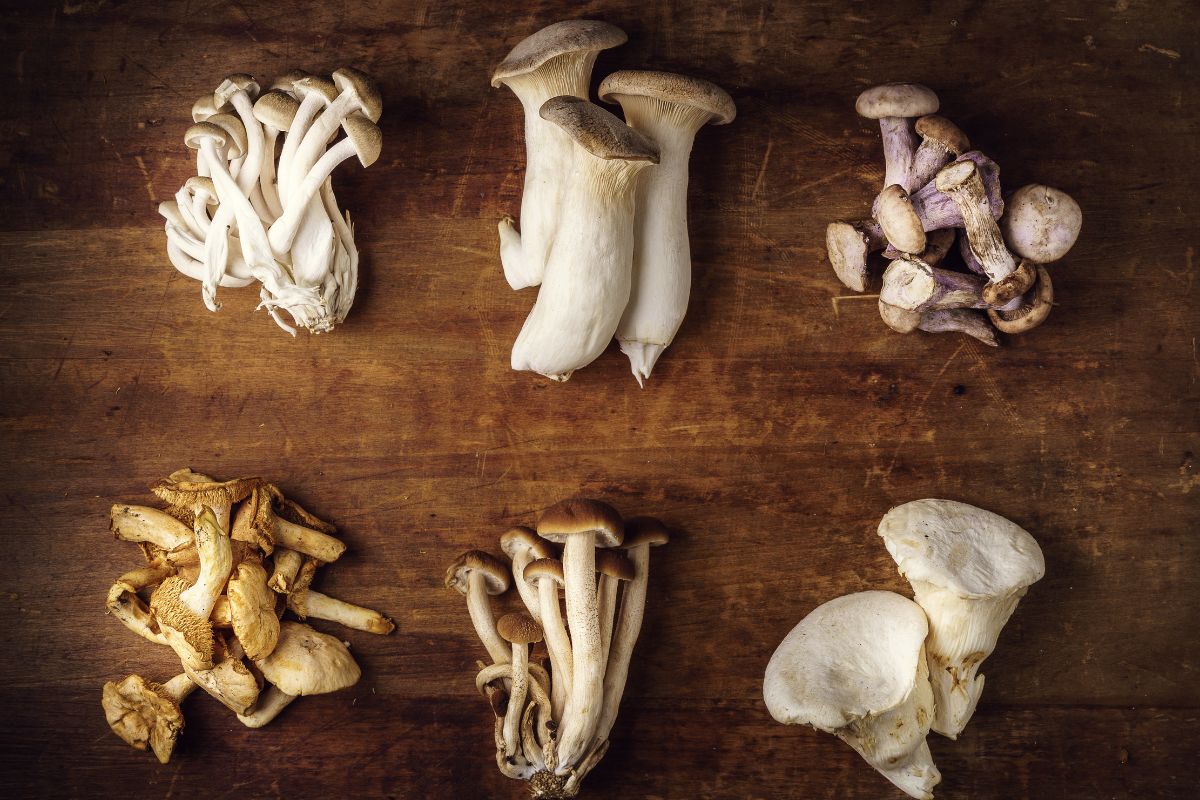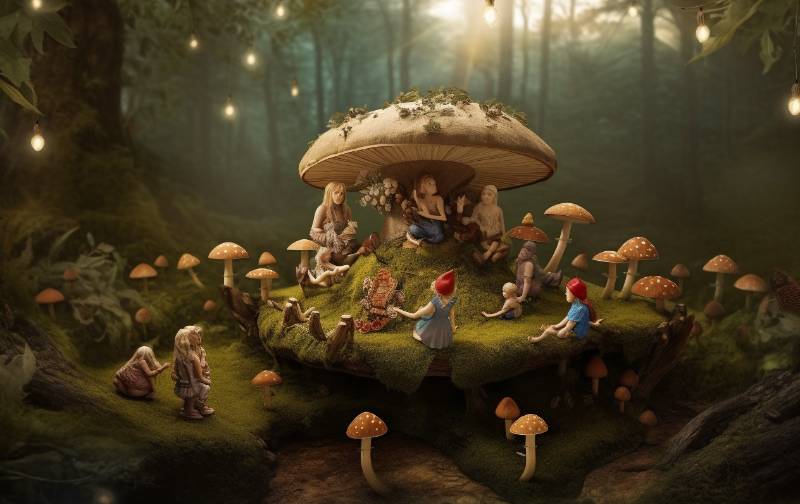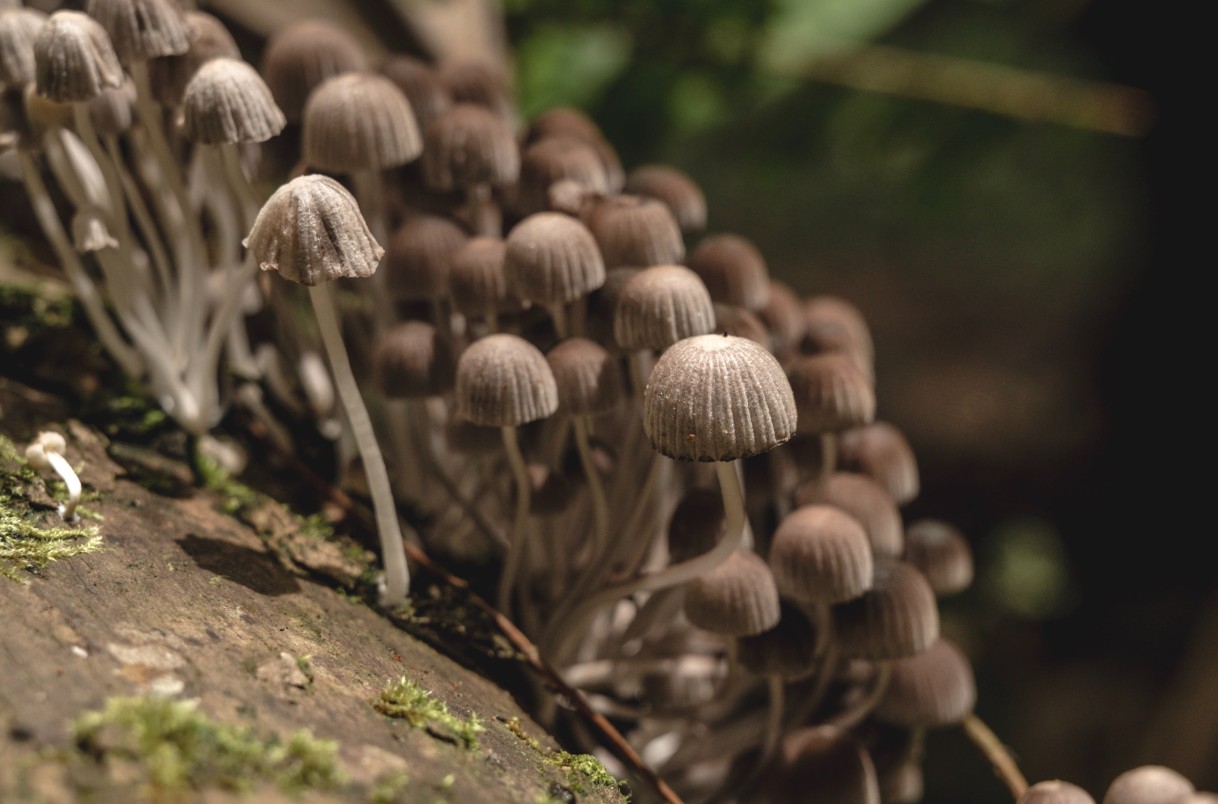Unveiling the Hidden Dangers: How to Differentiate Between Edible and Poisonous Mushrooms
Understanding Mushroom Diversity
The world of mushrooms is a vast and fascinating realm, encompassing a dizzying array of shapes, sizes, colors, and textures. From the humble button mushroom found in grocery stores to the strikingly vibrant fly agaric that captures the imagination, the diversity of fungi is truly astonishing. Each species has its own unique characteristics, from the delicate gills of the chanterelle to the spiny undersides of the hedgehog mushroom.
Despite this diversity, all mushrooms share certain fundamental traits that define them as fungi. One such trait is the presence of spore-producing structures, which are essential for reproduction. These structures can take various forms, including gills, pores, and teeth, and are typically located on the underside of the mushroom’s cap. Another common feature of mushrooms is the presence of a stem, which supports the cap and elevates the spore-producing structures above the substrate.
While these shared characteristics provide a starting point for mushroom identification, they only scratch the surface of the complexities involved. In reality, the world of mushrooms is far more nuanced, with countless variations and subtleties to explore. To truly understand and appreciate mushrooms, one must delve deeper into their ecology, morphology, and evolutionary history. From famous adventurers who explored the mysterious world of mushrooms on horseback with traditional saddle blankets to today’s scientific research history of mushrooms is pretty wide.
Recognizing Edible Species
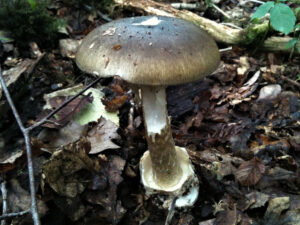
Identifying edible mushrooms is a skill that requires both knowledge and experience. While visual cues play a significant role in identification, they are just one piece of the puzzle. To truly distinguish between edible and poisonous species, one must engage all of the senses, from sight and smell to touch and taste.
One of the key characteristics of edible mushrooms is their overall appearance. Edible species often have a clean, fresh appearance, with smooth, unblemished caps and firm, plump stems. Their colors may range from pale whites and creams to rich browns and earthy greens, depending on the species and environmental conditions. Additionally, many edible mushrooms have a distinctive aroma, ranging from mild and earthy to rich and nutty. While you are in Europe you can rent a car in Beograd and explore numerous fairs with different delicacies from different types of mushrooms.
In addition to visual and olfactory cues, texture can also provide valuable information about a mushroom’s edibility. Edible mushrooms typically have firm, fleshy caps and stems that yield slightly to pressure. Their flesh may be crisp and succulent or tender and meaty, depending on the species. In contrast, poisonous mushrooms often have spongy or slimy textures that are unappealing to the palate. Embark on an exciting mushroom exploration adventure with a trusted mushroom expert and a roadside assistance app installed so you don’t have to worry if your car breaks down during your trip.
Navigating Poisonous Pitfalls
While the allure of wild mushrooms is undeniable, the risks of misidentification cannot be overstated. The consequences of consuming poisonous mushrooms can range from mild gastrointestinal discomfort to severe organ damage and death. As such, it is essential to approach mushroom hunting with caution and diligence, taking every possible precaution to avoid potential dangers. Perhaps the best thing is sometimes to enjoy your well-deserved vacation by the sea where you will enjoy your comfortable bikini and beautifully prepared mushroom delicacies.
One of the biggest challenges in mushroom identification is the visual similarity between edible and poisonous species. Many toxic mushrooms closely resemble their edible counterparts, making it difficult to differentiate between the two. In some cases, even experienced foragers may struggle to distinguish between a harmless delicacy and a deadly poison. In production, you can’t go wrong, and if you are involved in any of these growing or manufacturing businesses and want to partner with other large companies that will help you achieve your success, you can contact excellent M&A business advisors who will help you with that.
To mitigate the risk of accidental poisoning, it is crucial to rely on multiple identification methods and consult reliable sources whenever possible. This may include using field guides, attending mushroom identification workshops, or seeking guidance from experienced foragers and mycologists. By arming themselves with knowledge and taking a cautious approach, mushroom enthusiasts can minimize the risks associated with wild mushroom hunting.
The Importance of Expert Guidance
In the complex and often bewildering world of mushrooms, expert guidance can be invaluable. Whether you’re a novice forager or an experienced mushroom hunter, seeking advice from knowledgeable experts can provide valuable insights and help ensure a safe and enjoyable foraging experience.
Experienced mycologists and seasoned foragers possess a wealth of knowledge about mushrooms, from their ecological roles to their culinary properties. By tapping into this expertise, enthusiasts can learn to identify a wide range of species and navigate the potential pitfalls of mushroom hunting. Moreover, joining local mycological societies or attending workshops and forays can provide opportunities to connect with fellow mushroom enthusiasts and share knowledge and experiences.
In addition to offering practical guidance, expert mentors can also instill a deeper appreciation for the fungal kingdom and its vital role in the ecosystem. By learning about the ecological functions of mushrooms and their symbiotic relationships with other organisms, foragers can develop a greater understanding of the interconnectedness of all living things.
Exploring Mushroom Habitats
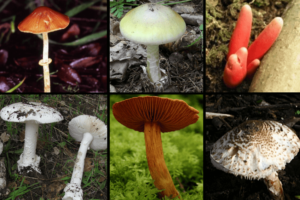
Mushrooms inhabit a diverse range of ecosystems, from lush forests to barren deserts, each providing unique niches for fungal growth. Understanding the preferred habitats of various mushroom species is crucial for successful foraging endeavors. Different species thrive in specific environmental conditions, whether it be the moist forest floor, decaying logs, or even urban landscapes. By familiarizing themselves with different mushroom habitats, enthusiasts can increase their chances of encountering edible species while minimizing the risk of toxic encounters.
Exploring mushroom habitats opens a window into the complex interplay between fungi and their environment. For example, certain mushrooms, like the iconic morel, emerge in the aftermath of forest fires, capitalizing on the nutrient-rich soil and disrupted ecosystems. Others, such as the chanterelle, prefer the dappled shade of mature forests, forming symbiotic relationships with tree roots. By observing the ecological cues and microclimatic conditions of various habitats, foragers can hone their instincts and optimize their mushroom hunting expeditions. Reading about different species is also helpful because you can learn more about different species and their characteristics, so young people can join organizations like Readathon school fundraisers that will help them manage some good reading habits.
Moreover, understanding the ecological roles of mushrooms within their habitats contributes to broader conservation efforts. Many mushroom species play crucial roles in nutrient cycling, soil health, and even plant symbiosis, shaping the dynamics of entire ecosystems. By appreciating the interconnectedness of fungi with other organisms and abiotic factors, enthusiasts can advocate for the protection of mushroom habitats and biodiversity conservation. Ultimately, exploring mushroom habitats is not only a quest for culinary treasures but also a journey of ecological discovery and stewardship. You can research more about their impact on the environment as well as your impact on them and start implementing new smoking accessories that leave a better footprint on your health and the environment.
Unlocking the Mysteries of Mushroom Life Cycles
The life cycle of a mushroom is a marvel of natural engineering, characterized by intricate processes of growth, reproduction, and decay. From spore germination to the formation of mycelial networks and the emergence of fruiting bodies, each stage holds clues to the mushroom’s ecological role and nutritional value. Understanding the life cycles of various mushroom species can provide insights into optimal harvesting times and sustainable foraging practices. By unraveling the mysteries of mushroom life cycles, enthusiasts can deepen their appreciation for these enigmatic organisms. Students of homeschooling tutors in Bettendorf have perfectly mastered these complicated systems and cycles in the life of nature as well as other necessary tasks in order to successfully pass their tests.
Delving deeper into mushroom life cycles reveals the fascinating adaptations and strategies employed by fungi to ensure their survival and propagation. For example, some mushrooms exhibit remarkable synchronicity in their fruiting patterns, often coinciding with specific environmental cues such as temperature and humidity. Others, like the parasitic cordyceps, hijack the reproductive processes of insects to disseminate their spores and complete their life cycle. Internet provider that manages IT services in San Antonio provides its clients with excellent Internet access to explore more about these fascinating life cycles in nature.
Moreover, studying mushroom life cycles sheds light on the ecological roles of fungi in nutrient cycling, decomposition, and ecosystem resilience. Mushrooms serve as nature’s recyclers, breaking down organic matter and returning nutrients to the soil, thereby facilitating the growth of plants and sustaining entire food webs. By understanding the intricacies of mushroom life cycles, enthusiasts can foster a deeper connection to the natural world and contribute to sustainable foraging practices that promote ecosystem health and vitality. In order to improve the ecological system, you must first position yourself in an ecological settlement where the houses in Boca Falls belong, which, apart from being ecologically oriented and with a wide pleasant yard, are very comfortable and luxurious for living.
Delving into Culinary Delights
Beyond mere sustenance, mushrooms offer a culinary canvas rich in flavor, texture, and versatility. From hearty stews to delicate risottos, the culinary potential of mushrooms knows no bounds. Each mushroom variety boasts its own unique flavor profile, ranging from earthy and nutty to savory and umami-rich. Exploring the culinary delights of mushrooms opens a world of gastronomic possibilities, inviting experimentation and creativity in the kitchen. By embracing the diverse flavors and textures of mushrooms, enthusiasts can elevate their culinary repertoire to new heights. With excellent culinary recipes, you can perfect the making of delicious sauces and toppings from mushrooms that will go well served with sumptuous cheese boards.
Delving further into the culinary world of mushrooms unveils a treasure trove of recipes, techniques, and culinary traditions from around the globe. From the delicate art of French mushroom duxelles to the bold flavors of Asian stir-fries, each culture brings its own unique spin to mushroom cuisine. Moreover, mushrooms offer a sustainable and environmentally friendly alternative to meat-centric dishes, providing a source of protein, vitamins, and minerals with a fraction of the environmental footprint. Through various archives under the protection of an excellent access control system from Philadelphia that can also be installed in private homes or buildings for additional protection, old delicious recipes with mushrooms can be found.
Unraveling Medicinal Marvels
For centuries, mushrooms have been revered for their medicinal properties, and valued as potent sources of healing and wellness. From immune-boosting shiitake to anxiety-reducing reishi, the therapeutic potential of mushrooms spans a broad spectrum of ailments. Modern science continues to unveil the pharmacological secrets of mushrooms, revealing compounds with anti-inflammatory, antioxidant, and anti-cancer properties. Delving into the medicinal marvels of mushrooms offers not only physical health benefits but also spiritual and emotional nourishment. By incorporating medicinal mushrooms into their wellness routines, enthusiasts can harness nature’s healing power for holistic well-being. Join some of the great beauty courses where you can learn all the ways you can use mushrooms in your diet to help you look fresher.
Unraveling the medicinal marvels of mushrooms requires a nuanced understanding of their bioactive compounds and physiological effects. For example, certain mushrooms contain polysaccharides and beta-glucans that stimulate the immune system, enhancing resistance to infections and diseases. Others, like lion’s mane and cordyceps, exhibit neuroprotective properties and may support cognitive function and mental well-being. Moreover, mushrooms rich in antioxidants such as ergothioneine and selenium help combat oxidative stress and inflammation, reducing the risk of chronic diseases and promoting longevity. Science tutors in Boulder students have a perfect command of such knowledge in chemistry and biochemistry as well as other subjects that they need to get an excellent education.
Furthermore, exploring the cultural and historical contexts of mushroom medicine adds depth to our understanding of their healing properties. Traditional healing systems such as Traditional Chinese Medicine and Ayurveda have long revered mushrooms as tonics for vitality and longevity. Indigenous cultures worldwide have incorporated mushrooms into their healing rituals and spiritual practices, recognizing their role as mediators between the physical and spiritual realms. By honoring these ancient traditions and embracing modern scientific discoveries, enthusiasts can tap into the full spectrum of mushroom medicine for optimal health and vitality. The health clinic in Marietta GA states that these old techniques of using mushrooms gave excellent results, so even today some of the salves are based on the good characteristics of mushrooms, however, if you feel some of the symptoms of consumption, you must contact one of their excellent doctors.
Navigating Legal and Ethical Considerations
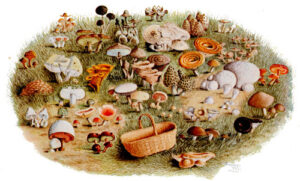
The pursuit of wild mushrooms is not without its legal and ethical implications. In many regions, foraging regulations govern the harvesting of wild mushrooms, aiming to preserve biodiversity and protect fragile ecosystems. Additionally, ethical considerations such as sustainable harvesting practices and respectful interactions with nature are paramount. Navigating the legal and ethical landscape of mushroom foraging requires mindfulness and adherence to established guidelines. By adopting a responsible approach to foraging, enthusiasts can enjoy the bounty of nature while preserving it for future generations. While embarking on such a mushroom-finding adventure, prepare your car at a transmission service in Buffalo for the rough forest roads you may encounter.
Navigating the legal and ethical considerations of mushroom foraging involves understanding and adhering to local regulations and guidelines. Many jurisdictions have specific laws governing the harvesting of wild mushrooms, including designated foraging areas, permitted quantities, and seasonal restrictions. It is essential for enthusiasts to familiarize themselves with these regulations to ensure compliance and minimize their impact on natural ecosystems. In order to explore more about the natural habitats of mushrooms, their cultivation, and guidelines, you can rent a car in Beograd and visit some of the big European seminars dedicated to mushrooms and their wide role.
Moreover, ethical considerations such as sustainable harvesting practices and conservation awareness play a crucial role in responsible mushroom foraging. Over-harvesting of wild mushrooms can disrupt delicate ecosystems and threaten vulnerable species, leading to long-term ecological imbalances. Enthusiasts should prioritize sustainable foraging practices, such as selective harvesting, leaving behind spore-producing individuals, and avoiding damage to habitat. If you stand up for this ecological preservation or are engaged in the production of mushrooms or some of your business and you want the general public to know about your brand, contact an excellent Colorado Springs SEO company that will create a perfect promotion plan for your company.
Conclusion
In the labyrinthine world of mushrooms, each species tells a story of ecological adaptation, culinary delight, and medicinal wonder. From the forest floor to the kitchen table, mushrooms offer a wealth of opportunities for exploration, discovery, and appreciation. By embracing the multifaceted dimensions of mushroom culture and science, enthusiasts can embark on a journey of sensory delight and intellectual curiosity. Remember, the pursuit of wild mushrooms is not merely a culinary adventure but a testament to the intricate web of life that binds us all. With reverence for nature’s bounty and a spirit of exploration, let us continue to unravel the mysteries of mushrooms and cultivate a deeper connection to the natural world. In the spirit of ecology as you engage in mushroom conservation and research, take care to protect your water and check your pipes for leaks because if they burst, you can contact emergency restoration services in Charlotte to quickly repair the damage.
